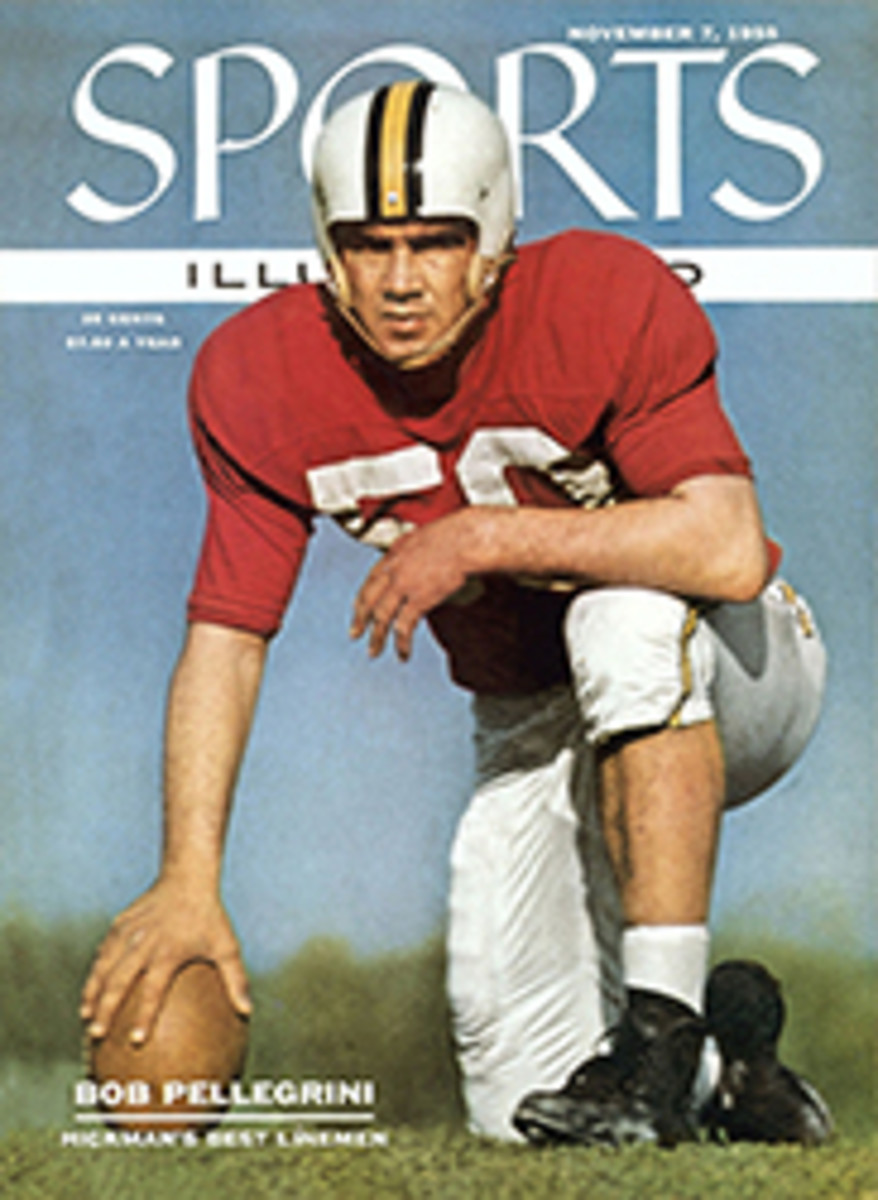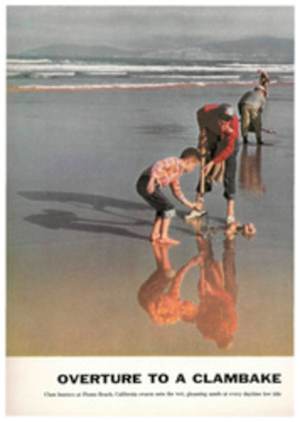
THE WEST'S GREAT HORSES
First there was the dust. Then down the draw came the rising sound of pounding hoofs and above that the soft-voiced "haw" and "eeyah" of working cowboys. In the herd were colts only, but they were the kind of colts that make cattlemen and a special breed of racegoing fan nod in vigorous approval. They already bore the unmistakable qualities for which they were bred—the thick chests, the muscular shoulders and flanks, the short back and neck and the stubby, quick legs that characterize the quarter horse.
This week, as a rapidly growing population of quarter horses frisked and danced and worked their way around the western plains states, a new herd of colts will start down the same draw toward the Santa Gertrudis headquarters of the giant King Ranch of Texas and the country's most important quarter-horse sale.
Only 25 colts (plus an equal number of Santa Gertrudis bulls) will be up for sale, but 2,500 persons from an estimated 27 states, Mexico and South America will be at the permanent auction ring and auctioneer's headquarters—constructed for this purpose alone—when the auction begins. Not all intend to buy. Some will be neighbors over for a social visit with the Klebergs, the King Ranch owners, and the lavish noontime barbecues the Klebergs like to throw on auction days. Over half, though, will come with hard cash in hand—no credit extended—and fully prepared to take immediate delivery. By Thoroughbred standards, the colts won't bring much (between $800 and $900), but this is eight times what the horses' relatives could command a decade ago and about $100 higher than any other colts will bring today.
Among those present will be J. Y. Henderson, veterinarian for the Ring-ling Brothers and Barnum and Bailey Circus, who comes every year. All 27 quarter horses used by Ringling Brothers were bought from the King Ranch by Dr. Henderson. Charles Moroski, the circus horse trainer, likes quarter horses because they are "sensitive but never temperamental and haven't a mean bone in their bodies."
Other men at the auction are there for a wide variety of reasons. The tractable quarter horse is highly prized as a movie horse. He is excellent in parades, as a cavalry mount and as a range horse. But it is as a sprinter with the pickup of a charged-up sports car that he is most valued. Compact and powerful, the quarter horse will lose to few other horses in a sprint. He can stop fast, too, and execute a 90° turn almost at a gallop. Those feats, coupled with an easy disposition and tremendous endurance, make him close to perfect as a cow pony, particularly where it comes to "cutting" cows. The quarter horse has no peer at this skill, which requires that he work into a herd, pick out a cow, drive her out and keep her out for an indefinite length of time.
Quarter horses are a purely American breed, having developed out of a cross between English and Spanish horses in the New World. The early colonists admired them for their speed and raced them over short, straight stretches of road for about a quarter of a mile; hence their name.
When Thoroughbreds began arriving from England along with other frills of civilization, the quarter horse moved west with the pioneers. In the Southwest it ran across Spanish lines again, this time the hardy but not so fleet Criollo, which had an uncanny knack with cows. The best traits of both breeds were retained.
But with the closing of the frontier toward the end of the 19th century, quarter horses came on hard days. Blood lines diminished almost to the point of extinction as they were crossed on everything, including Morgans and Percherons. That sort of thing produced strong horses but not speed. To bring back speed, some breeders introduced Thoroughbred blood. This produced the desired result. The horses were fast once you got them started. But they got tangled in their legs and they got bored and worn out with cow work. Range life was too tough for them.
The quarter horse might have disappeared entirely were it not for a group of Southwestern cattlemen who formed an association in 1940 "to perpetuate the blood lines." Earlier, Robert J. Kleberg Jr. had begun looking for a horse that could become the foundation of a line as vigorous and strong as the great Spanish horses his grandfather, Captain King, had had. He finally bought Old Sorrel from George Clegg of Alice, Texas, still one of the best quarter-horse breeders alive and at that time one of the few carrying on. According to Kleberg, Old Sorrel had everything—intelligence, action, disposition and great beauty. All of the present King Ranch quarter horses are his descendants.
The King Ranch has never consciously bred quarter horses for racing, but many of the other western ranches have. In the last few years quarter mile races have become tremendously popular in the Southwest. For years they were on the programs at state fairs, but now there are at least six major tracks in New Mexico, Arizona and California that have full daily cards and long racing seasons, summer and winter, during which millions of dollars are wagered. Spectators at a race become immensely excited. The horses get away so fast that they give the impression of having been shot from a catapult. A spectator can easily hold his breath for the duration of the race. The official record time for 440 yards is 22 seconds, but faster times have been made with a running start.
It is the old match race though—the kind they had on the frontier—that is the most colorful. In many sections it still survives. Two men will have a difference of opinion as to whose horse is the fastest. Word gets around that a "bush match" race is in the offing, and folks for miles around drive out to have a look. The place might be a straightaway track on one of the men's ranches or a country road or a cow pasture.
Right up to race time everybody places bets.
"If you were betting five on this," a man might ask, "which would you pick?"
"The bay mare," the other would say. "And I want this gentleman here to hold stakes."
Somebody drags a boot heel across the road to mark the start, paces off a quarter of a mile and makes the finish line. When it's all over everybody goes home and waits for another challenge. That's the way it has been with quarter-horse races for 300 years.
PHOTO
TONI FRISSELL
PHOTO
TONI FRISSELL
CHAMPION COWBOY of '30s, Dick Shelton buys, breeds quarter horses today.
PHOTO
TONI FRISSELL
POLO STAR Stewart Iglehart uses King Ranch horses to work cattle in Florida.
PHOTO
TONI FRISSELL
INSIDE CROWDED TENT AT THE KING RANCH IN TEXAS, COLTS STAND IN CHUTE AWAITING THEIR TURN IN AUCTION RING WHILE PREDOMINANTLY WESTERN AUDIENCE FOLLOWS BIDDING UP FRONT
PHOTO
TONI FRISSELL
A BIG SOCIAL EVENT OF THE YEAR, THE KING RANCH SALES ATTRACT MANY PERSONS WHO COME TO GET TOGETHER WITH THEIR NEIGHBORS AND, LIKE THOSE PICTURED BELOW, ENJOY THE SHOW
PHOTO
TONI FRISSELL
WORKING CATTLE, A KING RANCH COWHAND TAKES OUT ON FAST-STARTING QUARTER HORSE AFTER LIVELY SANTA GERTRUDIS CALF HIGHTAILING IT IN CLOUD OF DUST AWAY FROM HERD
PHOTO
TONI FRISSELL
STOCK HANDLERS, who work hard during sale, pass time of day near mesquite trees before the King Ranch auction begins.

